Madagascar's avifauna
Snapshots
- About 284 species with of which over 208 breeding locally on the island.
- Five families are endemic: Mesitornithidae, Brachypteraciidae and, Bernieridae, Leptosomatidae and Vangidae. In addition, Couinae and Philepittinae are endemic subfamilies.
- 117 species are endemic among the 280 inventoried species (Langrand, 1990; Langrand & Sinclair, 1994; Morris & Hawkins, in press) with 37 regional endemic genera
- 79 of these 110 endemic species and 33 of the 37 regional endemic genera are forest birds
- 39 of these 79 species are endemic to the Eastern BiomBiome known as the Evergreen Malagasy humid forest. (Langrand, 1990).
- 7 of these 79 species are endemic to the Biome of the South Biome of the Island known as the spiny forest of the semi-desert area of Madagascar
- 7 species of these 79 species are endemic to the Western Biome.
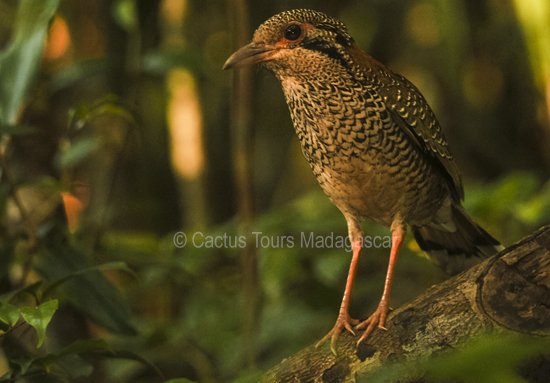
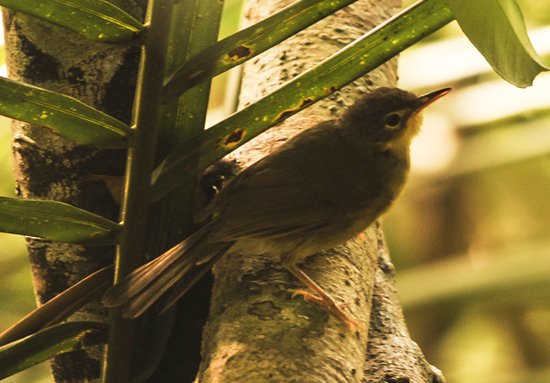
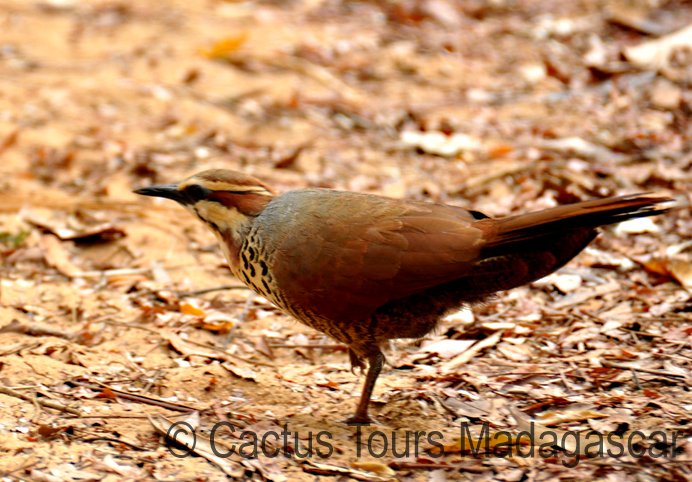
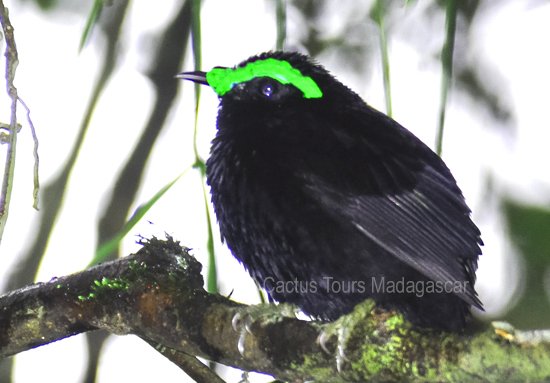
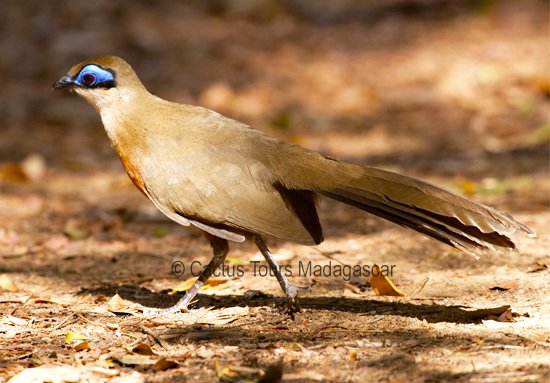

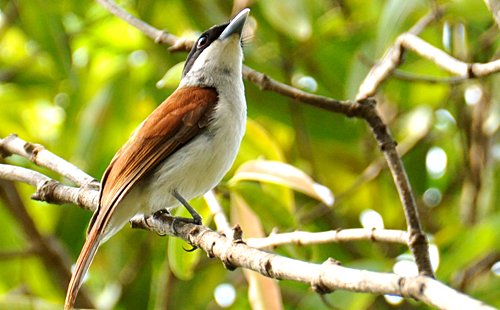
Madagascar is one of the most important destinations in the world for anyone undertaking a birding experience. The fourth biggest Island, Madagascar is one of the world’s largest biodiversity centers. For its exceptional biodiversity in fauna and flora, it is often watched thoughtfully as a priority in terms of natural heritage conservation. Due to its insularity, the biodiversity of the big island represents a unique and specific heritage in the world (Acquier et al ., 1999). The level of endemicity of its fauna and flora places it as a living laboratory of nature.
Resulting from the scientific researches and publications, the Malagasy birdlife is currently well known, thanks to the scientific researches and publications to which they gave rise. The originality of Madagascar is recognized for its biodiversity and well reflected in its birds. Because of its geological separation history, much of Madagascar’s biodiversity has evolved into along the geographical isolation of from the other parts of the world. A large number of taxa from the animal and plant kingdom prove this long history of isolation, and it has repercussions on certain particularities of the birds of Madagascar. The first particularity is its relative poverty in numbers of resident species compared to Africa mainland or other large tropical islands such as Borneo. The second characteristic is the level of endemism; the island has high levels of the birds’ genus (25%) and species (52.2%) endemism (Hawkins and Goodman, 2003).
As for many other groups of Madagascar’s fauna and flora, the affinities of the Malagasy birds are mainly African. Recent molecular studies confirm these links and even beyond previously estimated trends because the few representatives for whom close relatives were estimated in Asia, turn out to be clearly African origins (Cibois et al., 2001, ; Kirchman et al., 2001, ; Yamagishi, 2001, Reddy et al., 2012). In the 1980s, fundamentally our fundamental knowledge on Malagasy birdlife was compiled in the works of Milnes Edwards and Grandidier (1885), Rand (1936) and Milon et al., (1937), and focused on data from the mid-twentieth century. At the end of the 1980s and with the implementation of nature protection programs, NGOs formulated the need for field data and also opened projects for the study of threatened taxa. (Willmé, 2013).
Previously, Cretaceous fossils have revealed ancestral forms of birds with five taxa including Rahonavis ostromis that existed 80 million years ago and have been found close to Archeopteryx. The family of Aepyornithideae, unique to Madagascar, includes minus at least four species, all of which are extinct (Aepyornis gracilis, A. hildebrandti, A. maximus, A. medius), which could potentially have insured the dispersion of palms. The legendary elephant birds were still alive in the memory of people in the 17th century, but already for at least a century, Alaotra Grebe Tachybaptus rufolavatus,. Madagascan Pochard – Aythya innotata was recently seen for the first time since the end of the 20th century.
Among the 280 bird species that currently exist in Madagascar, 117 of them are endemic to the island, representing 40% of all species and 55.5% of the breeding species, giving to Madagascar the island the highest percentage of endemic species of any major country in the world. (BirdLife International, 2017). Like other taxonomic groups in the Malagasy rainforests, birdlife contains a significant percentage of endemic species. More than half of the resident taxa on the island are found nowhere else (Langrand 1995). Seventy-nine of these 117 endemic species and 37 genera are found only in Malagasy forests. Ninety percent of the species restricted to the forest are therefore endemic.
208 species are locally breeding breeder (78%) and 72 do not breedare vagrant on the island (26%), such as a large proportion of migratory species. Among these last, forty are nesting on the island (Ardeola idae, Glareola ocularis, Cuculus rochii and Eurystomus glaucurus).
For migratory birds on the Afro-Eurasian route, including shorebirds wintering in Madagascar, the decline rate of birds is 40% (Wetlands International, 2008) and 10% are classified as Globally Threatened or Nearly Endangered and several other birds continue to disappear (BirdLife, 2008, IUCN, 2016).
Then, At least four species found in the wild were introduced to Madagascar by humans (Columba livia, Acridotheres tristis, Passer domesticus and, Estrilda astrild) and another Numida meleagris). The only breeding species in Africa, Palearctic migrants (most Charadriiformes as well as two Falconiformes) winter in Madagascar.
The endemic families and subfamilies
Madagascar endemic birds are distributed in seven families:
Mesitornithidae – This family is represented by two genera, Mesitornis with two species and Monias possessing a unique living taxon and another subfossil species that is was not yet described and already extinct. In total, four species of mesites are known to be on the island in recent geological history.
Couinae – This subfamily is represented in Madagascar by one genus, Coua spp. and nine living species. In addition, to two extinct subfossil species, C. delalandeia disappeared 160 years ago and C. berthae were newly discovered. As a result, a total of 1211 Coua species are known from the recent geological history of the island.
Brachypteraciidae – This family is represented by four genera, Atelornis with two species, and Brachypteracias, Geobiastes and Uratelornis, which are monospecific. Including an extinct subfossil species belonging to the Brachypteracias genus, six species of ground brachypterolus are known to be from the island in recent geological history.
Leptosomidae – This family is found only in Madagascar and Comoros, and is therefore considered as aan endemic family endemic to the Malagasy region.
A study based on the difference between the plumage of the Leptosomus discolor gracilis populations in Madagascar and Grande Comore has finally resulted in rising the population of Grande Comore having risen to the rank of species.
Philepittinae – This subfamily has two genera, Philepitta and Neodrepanis. Each one is represented by two species.
Bernieridae – This family is currently represented in Madagascar by eight genera (Bernieria, Crossleyia, Cryptosylvicola, Hartertula, Oxylabes, Randia, Thamnornis and Xanthomixis) and 11 species.
Vangidae – This family is represented in Madagascar by 15 genera (Artamella, Calicalicus, Cyanolanius, Euryceros, Falculea, Hypositta, Leptopterus, Mystacornis, Newtonia, Oriola, Pseudobias, Schetba, Tylas, Vanga and Xenopirostris) and 21 species. Cyanolanius madagascarinus also lives in The Comoros Island, and is therefore endemic to the Malagasy region. With the exception of Calicalicus, Newtonia and Xenopirostris, all genera are monotypic ieor each re presents a unique species.
Conservations
- Mesitornithidae
All mesites have a “Vulnerable” conservation status. However, little information is available. There is considerable pressure on the remaining populations due to the reduction in of the area of evergreen forests (Mesitornis unicolor and M. variegata), deciduous forest (M. variegata) and spiny forest (Monias benschi), with occasional hunting (for bushmeat) and predation by native and introduced predators. - Couinae
All members of Coua are hunted by a large number of natural predators, including various carnivores (native and introduced), raptors and snakes. Among the predators of eggs and chicks of C. coquereli, there are snakes and other reptiles. In addition, due to their often large size and the ease with which they can be caught, hatches are often considered as bush meat for riparian or forested areas population. All current species face different degrees, and larger species are the most hunted. Generally, the different species appear to be sensitive to forests degradation, particularly that of which constitute their natural habitats. They have been proposed as an excellent group to use as bio-indicators for the environmental status monitoring. - Brachypteraciidae
The four species of ground brachypterol that live in an evergreen forest, with the exception of Atelornis pittoides, appear to be very sensitive to the habitat degradation. Brachypteracias leptosomus, A. crossleyi and Geobiastes squaminger can only be found in pristine forest. These taxa, therefore, represent an excellent group that can also be used as bio-indicators for the environmental status monitoring. Uratelorni s chimaera, which lives mostly in the spiny forest, has a rather small range, as its natural habitat has undergone a lot of human-induced degradation. - Leptosomidae
The conservation status of Leptosomus discolour is “The least worrying”. Outside primary forests, this species can still be found in Few few forest fragments can be found, and forests that have been logged and burned. Many predators such as carnivores and raptors feed on Leptosomusthis species. In addition, this species are is hunted for both bushmeat and magic potions. - Philepittinae
As all members of this family depend on the forest, the continued destruction of the remaining forest habitats exposes their future at risk. - Bernieridae
All members of this family live in the forest and the human pressures on their remaining habitats clearly have negative impacts on the future of these birds. - Vangidae
The vast majority of vangas depends on the forest, and partially uninterrupted human pressures on the remaining forest habitats have predictable negative impacts on the future of these birds.
Adaptive radiation
Once an organism has been able to successfully colonize a landmass and expands its distribution over the centuries and millennia, it would come into contact with different ecological conditions, types of food and other species likely to eat similar resources (competition). Today, on an island like Madagascar with many types of forests and climatic regimes, many changes can take place allowing species to fill different ecological niches.
In recent decades, molecular genetics studies has brought us new insights into the history of evolution and speciation. Fundamentally, the studies on Malagasy birds with endemism on higher levels of taxonomy, which are discussed in detail in the next section, it was possible to discern whether birds with different habits and lifestyles, but beaks similar, for example, come from a common ancestor. In this way, adaptive radiation is defined as a rapid diversification of species from a common ancestor that is accompanied by phenotypic divergence and specialization to exploit newly available resources.
Madagascar is known for exceptional adaptive radiation in many groups in its biodiversity. For birds, there are at least seven endemic monophyletic groups that have diversified since their arrival in Madagascar. These groups include Mesitornithidae, Couinae, Brachypteraciidae, Leptosomidae, Philepittinae, Bernieridae and Vangidae. Dynamic changes can affect morphology, ecology and behaviour by ecological niche. To illustrate an adaptive radiation, one of the most beautiful examples among the birds of the world is the Madagascar Vangidae. Many species of vangas can be found by feeding in different ways and using their beaks as tools.
More details
Madagascar is one of the most important destinations in the world for anyone undertaking a birding experience. The fourth biggest Island, Madagascar is one of the world’s largest biodiversity centers. For its exceptional biodiversity in fauna and flora, it is often watched thoughtfully as a priority in terms of natural heritage conservation. Due to its insularity, the biodiversity of the big island represents a unique and specific heritage in the world (Acquier et al ., 1999). The level of endemicity of its fauna and flora places it as a living laboratory of nature.
The Malagasy birdlife is currently well known, thanks to the scientific researches and publications to which they gave rise. The originality of Madagascar is recognized for its biodiversity and well reflected in its birds. Because of its geological separation, much of Madagascar’s biodiversity has evolved into the geographical isolation of the other parts of the world. A large number of taxa from the animal and plant kingdom prove this long history of isolation, and it has repercussions on certain particularities of the birds of Madagascar. The first particularity is its relative poverty in numbers of resident species compared to Africa mainland or other large tropical islands such as Borneo. The second characteristic is the level of endemism; the island has high levels of the birds’ genus (25%) and species (52.2%) (Hawkins and Goodman, 2003).
As for many other groups of Madagascar’s fauna and flora, the affinities of the Malagasy birds are mainly African. Recent molecular studies confirm these links and even beyond previously estimated trends because the few representatives for whom close relatives were estimated in Asia, turn out to be clearly African origins (Cibois et al. 2001, Kirchman et al. 2001, Yamagishirt, 2001, Reddy et al 2012).
In the 1980s, fundamentally our Malagasy birdlife knowledge was compiled in the works of Milnes Edwards and Grandidier (1885), Rand (1936) and Milon et al. (1937), and focused on data from the mid-twentieth century. At the end of the 1980s and with the implementation of nature protection programs, NGOs formulated the need for field data and also opened projects for the study of threatened taxa. (Willmé, 2013).
Previously, Cretaceous fossils have revealed ancestral forms of birds with five taxa including Rahonavis ostromis that existed 80 million years ago and have been found close to Archeopteryx. The family of Aepyornithideae, unique to Madagascar, includes minus four species, all of which are extinct (Aepyornis gracilis, A. hildebrandti, A. maximus, A. medius), which could potentially have insured the dispersion of palms. The legendary elephant birds were still alive in the memory of people in the 17th century, but already for at least a century, Alaotra Grebe Tachybaptus rufolavatus. Madagascan Pochard – Aythya innotata was recently seen for the first time since the end of the 20th century. Among the 280 bird species that currently exist in Madagascar, 117 of them are endemic to the island, representing 40% of all species and 55.5% of breeding species, giving Madagascar the highest percentage of endemic species of any major country in the world. (BirdLife International, 2017). Like other taxonomic groups in the Malagasy rainforests, birdlife contains a significant percentage of endemic species. More than half of the resident taxa on the island are found nowhere else (Langrand 1995). Seventy-nine of these 117 endemic species and 37 genera are found only in forests. Ninety percent of the species restricted to the forest are therefore endemic. 208 are locally breeding (78%) and 72 do not breed on the island (26%), such as a large proportion of migratory species. Among these last, forty are nesting on the island (Ardeolaidae, Glareola ocularis, Cuculusrochii and Eurystomus glaucurus).
For migratory birds on the Afro-Eurasian route, including shorebirds wintering in Madagascar, the decline rate of birds is 40% (Wetlands International, 2008) and 10% are classified as globally threatened or nearly endangered and several other birds continue to disappear (BirdLife, 2008, IUCN, 2016).Then, at least four species found in the wild were introduced to Madagascar by humans (Columba livia, Acridotheres tristis, Passer domesticus and Estrilda astrild) and another Numidameleagris. The only breeding species in Africa, Palearctic migrants (most Charadriiformes as well as two Falconiformes) winter in Madagascar.
The endemics
Madagascar endemic birds are distributed in seven families:
Mesitornithidae – This family is represented by two genera, Mesitornis with two species and Monias possessing a unique living taxon and another subfossil species that is not described and extinct. In total, four species of mesites are known to be on the island in recent geological history.
Couinae – This subfamily is represented in Madagascar by one genus, Coua and nine living species. In addition to two extinct subfossil species, C. delalandeia disappeared 160 years ago. As a result, a total of 12 Coua species are known from the recent geological history of the island.
Brachypteraciidae – This family is represented by four genera, Atelornis with two species, and Brachypteracias, Geobiastes and Uratelornis, which are monospecific. Including an extinct subfossil species belonging to the Brachypteracias genus, six species of ground brachypterolus are known to be from the island in recent geological history.
Leptosomidae – This family is found only in Madagascar and Comoros, and is therefore considered a family endemic to the Malagasy region.
A study based on the difference between the plumage of the Leptosomusdiscolorgracilis populations in Madagascar and Grande Comore has finally resulted in the population of Grande Comore having risen to the rank of species.
Philepittinae – This family has two genera, Philepitta and Neodrepanis. Each one is represented by two species.
Bernieridae – This family is currently represented in Madagascar by eight genera (Bernieria, Crossleyia, Cryptosylvicola, Hartertula, Oxylabes, Randia, Thamnornis and Xanthomixis) and 11 species.
Vangidae – This family is represented in Madagascar by 15 genera (Artamella, Calicalicus, Cyanolanius, Euryceros, Falculea, Hypositta, Leptopterus, Mystacornis, Newtonia, Oriola, Pseudobias, Schetba, Tylas, Vanga and Xenopirostris) and 21 species. Cyanolaniusmadagascarinus also lives in The Comoros Island, and is therefore endemic to the Malagasy region. With the exception of Calicalicus, Newtonia and Xenopirostris, all genera are monotypic or each represents a unique species.
Conservations
Mesitornithidae
All mesites have a “Vulnerable” conservation status. However, little information is available. There is considerable pressure on the remaining populations due to the reduction in the area of evergreen forests (Mesitornis unicolor and M. variegata), deciduous forest (M. variegata) and spiny forest (Monias benschi), with occasional hunting (for bushmeat) and predation by native and introduced predators.
Couinae
All members of Coua are hunted by a large number of natural predators, including various carnivores (native and introduced), raptors and snakes. Among the predators of eggs and chicks of C. coquereli, there are snakes and other reptiles. In addition, due to their often large size and the ease with which they can be caught, hatches are often considered as bush meat for riparian or forested areas population. All current species face different degrees, and larger species are the most hunted. Generally, the different species appear to be sensitive to forest degradation, particularly that of their natural habitats. They have been proposed as an excellent group to use as bio-indicators for the environmental status monitoring.
Brachypteraciidae
The four species of ground brachypterol that live in an evergreen forest, with the exception of Atelornispittoides, appear to be very sensitive to the habitat degradation. Brachypteracias leptosomus, A. crossleyi and Geobiastes squaminger can only be found in pristine forest. These taxa, therefore, represent an excellent group that can also be used as bio-indicators for the environmental status monitoring. Uratelorni schimaera, which lives mostly in the spiny forest, has a rather small range, as its natural habitat has undergone a lot of human-induced degradation.
Leptosomidae
The conservation status of Leptosomus discolour is “The least worrying”. Few forest fragments can be found, forests that have been logged and burned. Many predators such as carnivores and raptors feed on Leptosomus. In addition, species are hunted for both bushmeat and magic potions.
Philepittinae
As all members of this family depend on the forest, the continued destruction of the remaining forest habitats exposes their future at risk.
Bernieridae
All members of this family live in the forest and the human pressures on their remaining habitats clearly have negative impacts on the future of these birds.
Vangidae
The vast majority of vangas depend on the forest, and partially uninterrupted human pressures on the remaining forest habitats have predictable negative impacts on the future of these birds.
Adaptive radiation
Once an organism has been able to successfully colonize a landmass and expand its distribution over the centuries and millennia, it would come into contact with different ecological conditions, types of food and other species likely to eat similar resources (competition). Today, on an island like Madagascar with many types of forests and climatic regimes, many changes can take place allowing species to fill different ecological niches.
In recent decades, molecular genetics has brought us new insights into the history of evolution and speciation. Fundamentally, the studies on Malagasy birds with endemism on higher levels of taxonomy, which are discussed in detail in the next section, it was possible to discern whether birds with different habits and lifestyles, but beaks similar, for example, come from a common ancestor. In this way, adaptive radiation is defined as a rapid diversification of species from a common ancestor that is accompanied by phenotypic divergence and specialization to exploit newly available resources
Madagascar is known for exceptional adaptive radiation in many groups in its biodiversity. For birds, there are at least seven endemic monophyletic groups that have diversified since their arrival in Madagascar. These groups include Mesitornithidae, Couinae, Brachypteraciidae, Leptosomidae, Philepittinae, Bernieridae and Vangidae. Dynamic changes can affect morphology, ecology and behaviour by ecological niche. To illustrate an adaptive radiation, one of the most beautiful examples among the birds of the world is the Madagascar Vangidae. Many species of vangas can be found by feeding in different ways and using their beaks as tools.

